

William Stopford
Hyundai i30’s electric replacement spied inside and out with concept car looks
2 Days Ago
The BMW 128ti sees the German marque throw its hat into the highly competitive front-drive hot hatch ring to go up against established players.
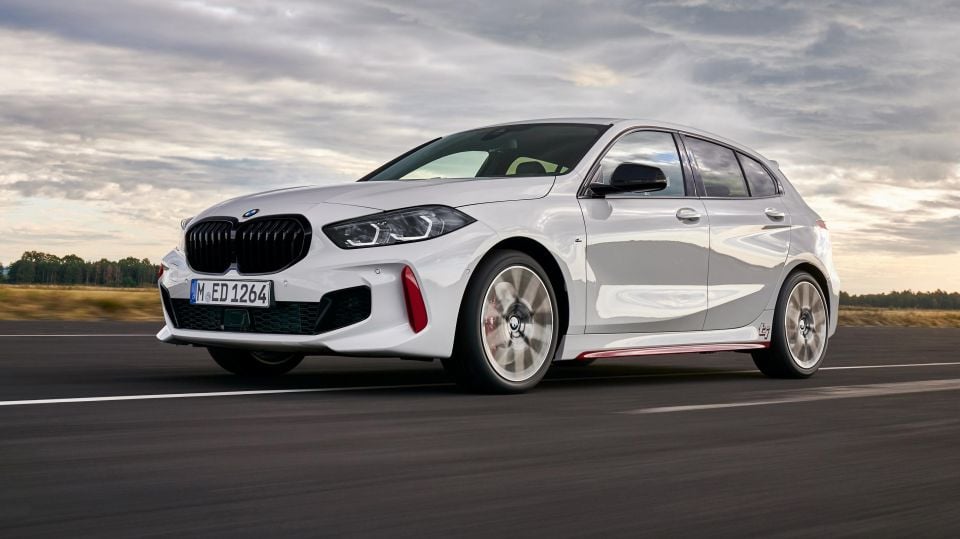
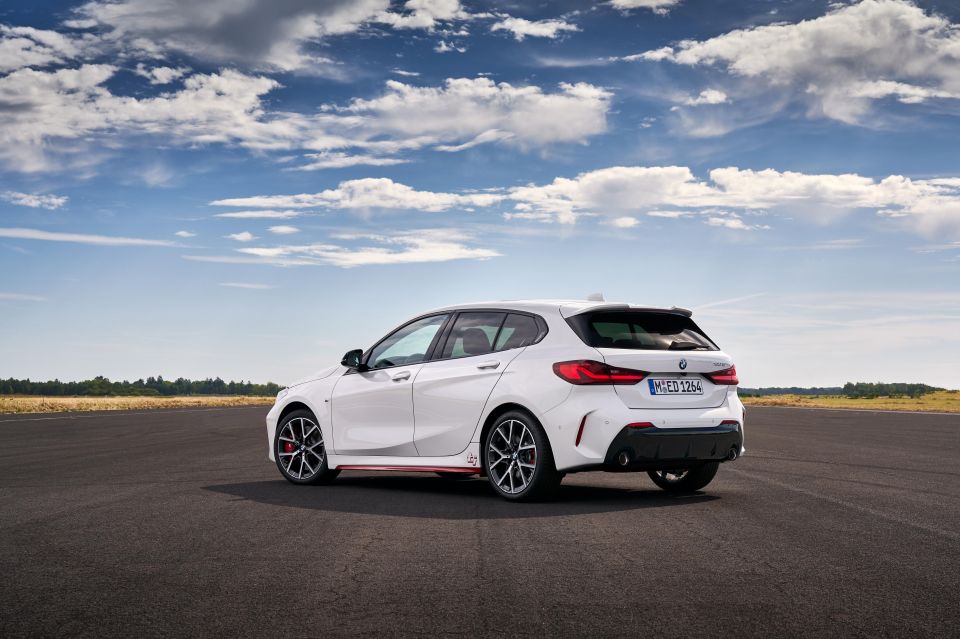

Contributor
New from
$46,990
excl. on-roads

Contributor
New from
$46,990
excl. on-roads


Contributor
New from
$46,990
excl. on-roads

Contributor
New from
$46,990
excl. on-roads
Quickly see how this car stacks up against its competition. Select any benchmark to see more details.
Where expert car reviews meet expert car buying – CarExpert gives you trusted advice, personalised service and real savings on your next new car.
If you aren’t a BMW aficionado, then you might not immediately get the significance of the ‘ti’ badging on this beefed-up BMW 1 Series.
It stands for Turismo Internazionale and first appeared on BMW’s ‘Neue Klasse’ models in the early 1960s.
Back then the badge stood for sportier versions and the 1800 TI, for example, even used performance components developed by Alpina.

The letters haven’t appeared on a new BMW model since the 323ti in 1997, so the return of the badge after two decades indicates that this car is more than a mere specification grade.
There’s already a high-performance variant of the 1 Series called the M135i xDrive, and this continues to sit atop the range, but the special designation of the 128ti sees it slot in beneath that car and aims to deliver a package for keener driving enthusiasts.
It ditches the all-wheel-drive transmission of the M135i and adds some unique styling elements, which BMW hopes will give the 128ti enough appeal to woo buyers away from its direct rivals, such as the Volkswagen Golf GTI, Ford Focus ST, Hyundai i30 N, and Renault Megane RS.
We’ve driven a pre-production version in Europe to see how it stacks up.

The 2021 BMW 128ti is priced from $56,900 plus on-road costs in Australia, making it $7000 more affordable than the all-paw M135i xDrive Pure and a whole $13,000 cheaper than the full-fat M135i xDrive. It’s also $11,000 more than the entry-level 118i.
Compared to mainstream rivals, the 128ti actually isn’t far off. The Mk8 Volkswagen Golf GTI will be $53,100 before on-roads when it arrives around mid-2021, and the Honda Civic Type R is priced from $54,990 plus on-roads.
Ford’s Focus ST automatic is significantly more affordable at $44,890 list, while the Renault Megane RS Trophy auto is $56,990 plus on-roads.
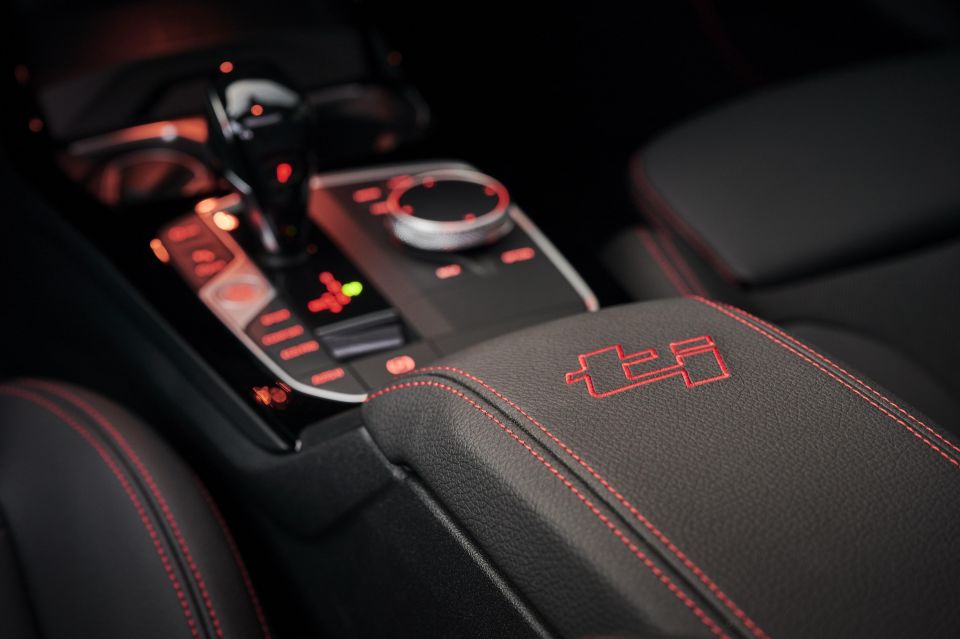
Buy your new car without the stress. It's fast, simple and completely free.

Great service from Travis and team, second time I have used this business would not hesitate to recommend them to anyone
Craig C.
Purchased a Ford Ranger in Sunshine Coast, QLD
CarExpert helped Craig save thousands on his Ford Ranger, now let us save you on your next new car.
Find a dealThere is only one specification for the 128ti and that includes various styling elements with exterior details like the red bumper inserts and ti logo on the sills.
Optionally, these can be deleted if you prefer a more subtle look. Bespoke 18-inch M bi-colour lightweight alloy wheels can be upgraded to larger 19-inch wheels as an option, too.
An exterior ‘Shadowline’ package is part of the standard equipment, which darkens the kidney grille, mirror caps and window surrounds.
As a no-cost option, buyers can specify Michelin Pilot Sport 4 tyres from the factory, and they can also choose to have the darkened headlights. These add a more menacing look to the car.
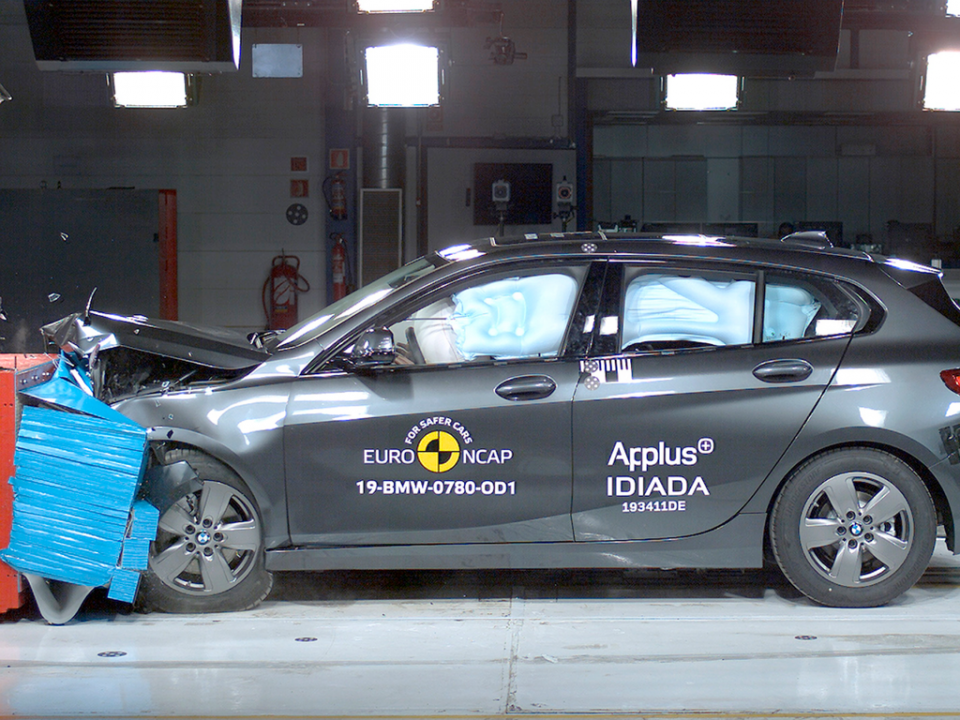
The BMW 1 Series has a five-star ANCAP safety rating with 2019 datestamp, which applies to all variants.
That rating was based on an adult occupant protection score of 83 per cent, child occupant protection of 89 per cent, vulnerable road user protection of 76 per cent and safety assist of 73 per cent.
All BMW 1 Series models come with the following standard safety equipment:
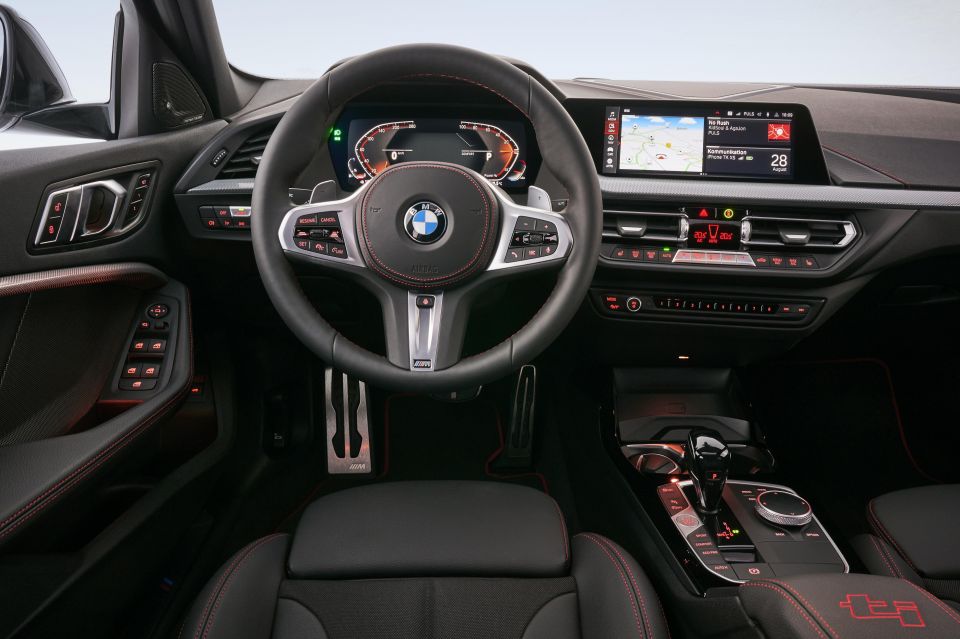
For the most part the interior of the 128ti is much the same as the other models in the 1 Series range, but it does get some unique touches to single it out as a sporty number.
Most obvious is the red ‘ti’ logo that’s embroidered into the centre armrest, and it echoes a red theme throughout the car – differentiating it from the traditional BMW M colours and possibly taking a dig at Volkswagen’s Golf GTI.
The sports seats get a unique insert and have cloth Sensatec upholstery, with the option to upgrade to Dakota leather.
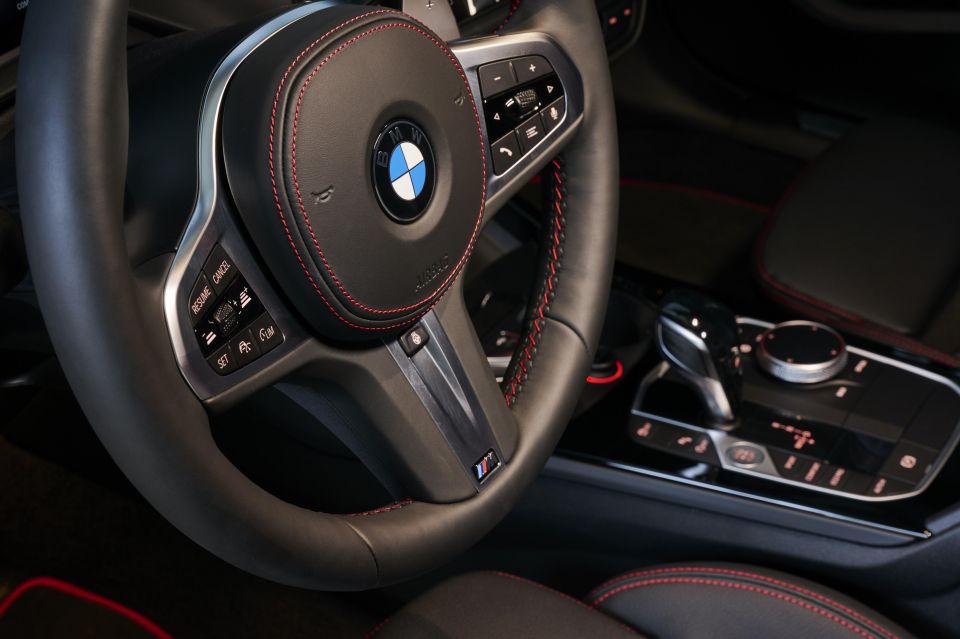
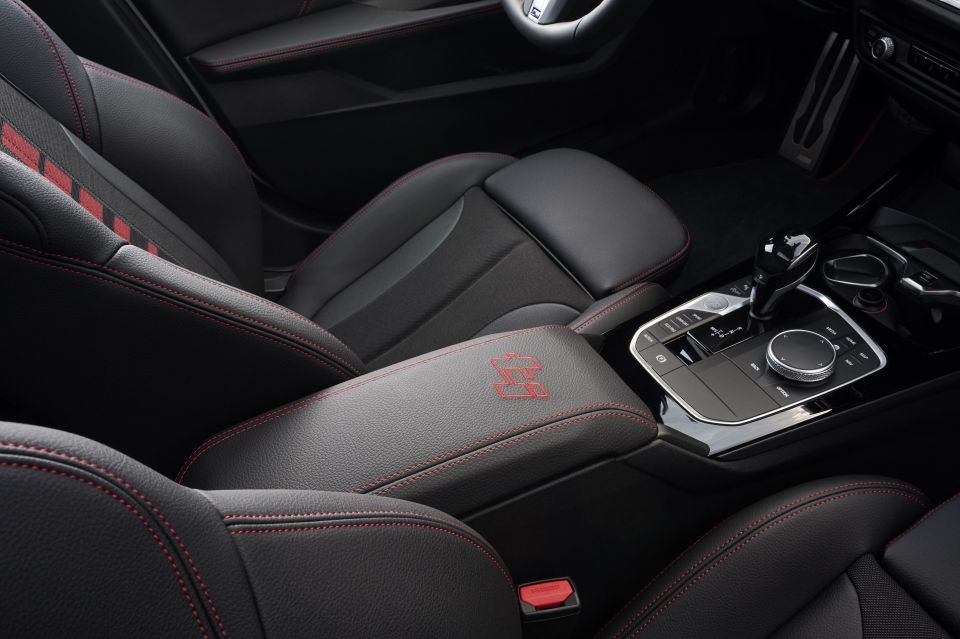
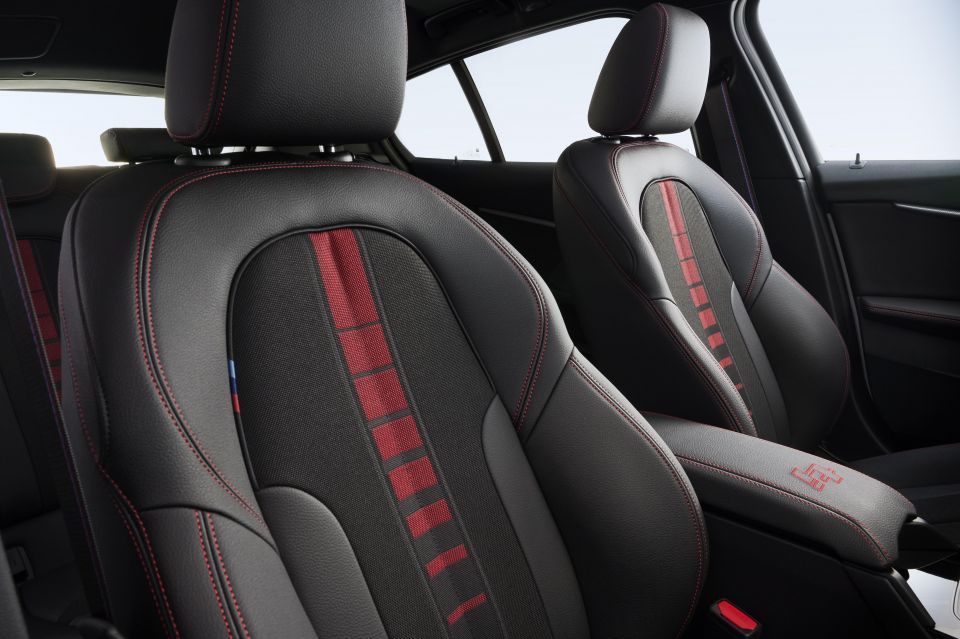
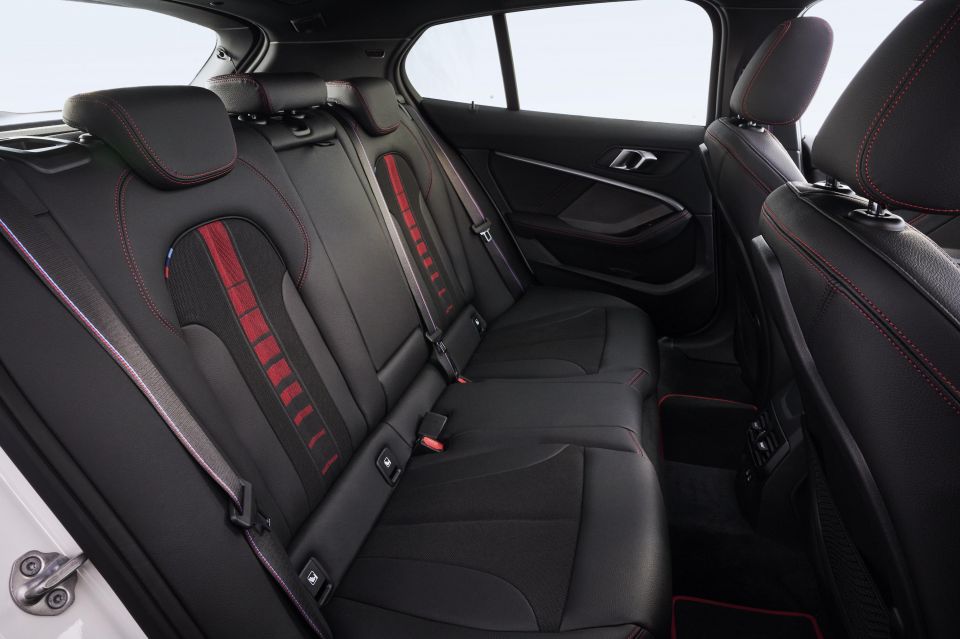
It has all the trappings of a premium hatchback, despite the sporting remit, and there’s a rotary controller for the BMW iDrive infotainment system that includes a touchscreen display.
There’s a decent amount of interior space even for those sitting in the rear, but there is still a transmission tunnel to take away some of the foot space for the middle rear seat.
The 1 Series offers 380 litres of luggage capacity, which can be increased to 1200 litres by folding the rear bench seat.
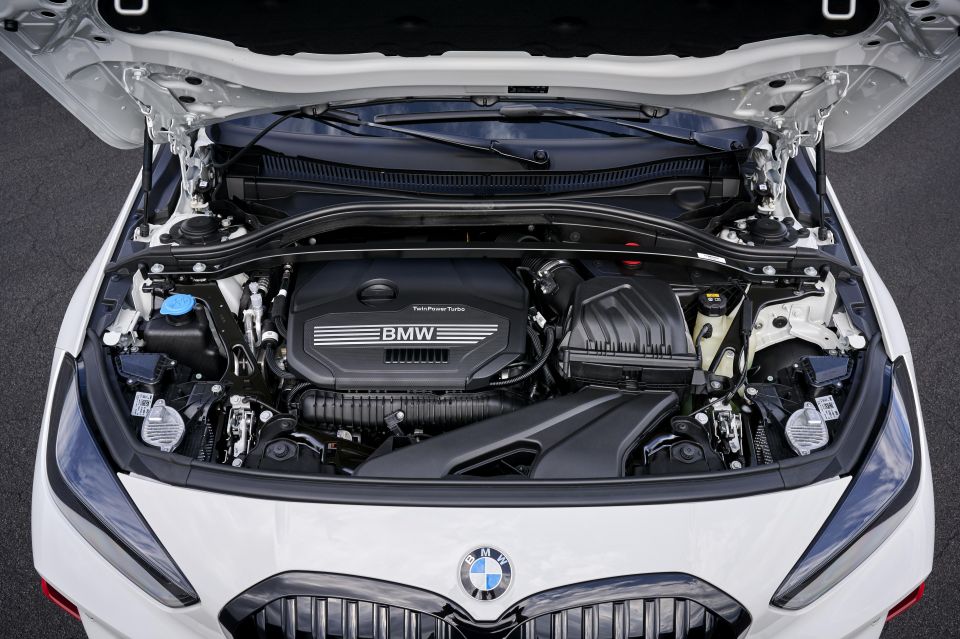
Powering the 128ti is a 2.0-litre turbocharged four-cylinder petrol engine with an output of 195kW at a relatively heady 4750-6500rpm and a robust 400Nm of torque, available from 1750rpm up to 4500rpm.
That may be 30kW less than the range-topping M135i xDrive musters, but it makes the same torque while also using the same eight-speed ‘Steptronic’ sports automatic gearbox.
Ditching the all-wheel-drive of the M135i helps to save 80kg, but the Torsen limited-slip differential on the front axle is retained, ensuring optimum power delivery through the front wheels.
The 0-100km/h sprint takes a claimed 6.1 seconds, making it faster than the Volkswagen Golf GTI, and putting it right in the mix with the others at the sharp end of the segment. BMW quotes a top speed of 250km/h.
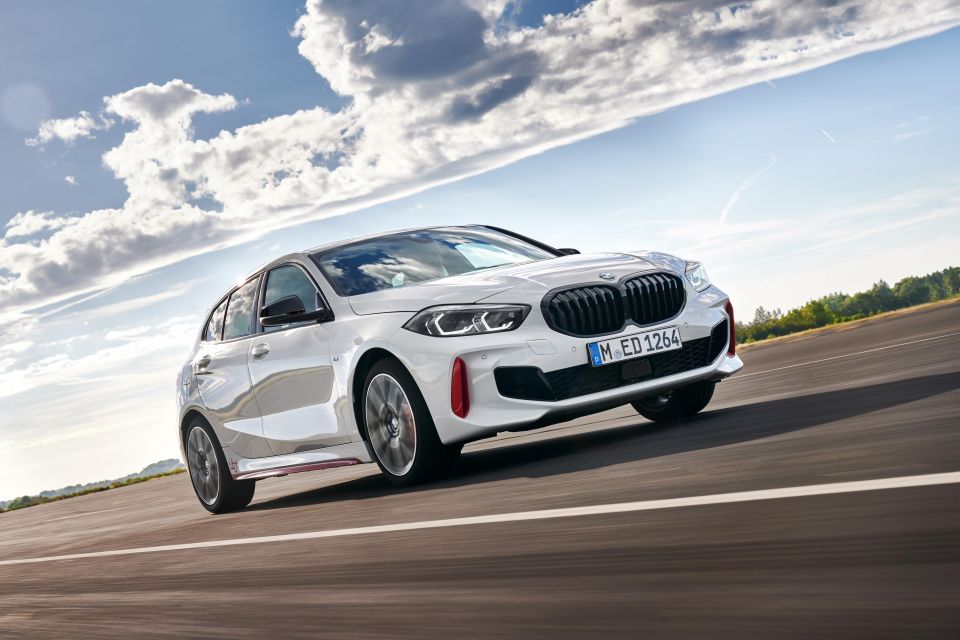
In comparison to the slightly sterile M135i xDrive, the BMW 128ti is a far more engaging car to drive and makes it one that proper enthusiasts are going to appreciate. Proof that less can be more, the 35kW power deficit never comes into the equation when you get this hot hatch on a proper set of bends.
It is a car with two sides, as, when you simply want to drive around in everyday commuting, it delivers a composed ride that is only just on the firm side and not jarring. The eight-speed auto makes light work of traffic and the engine has plenty of performance on hand for quick overtakes or joining highways.
Switching to the car’s Sport mode does increase the sense of urgency. Not only does the gearbox alter its calibration, but the sound that’s fed into the cabin amplifies.
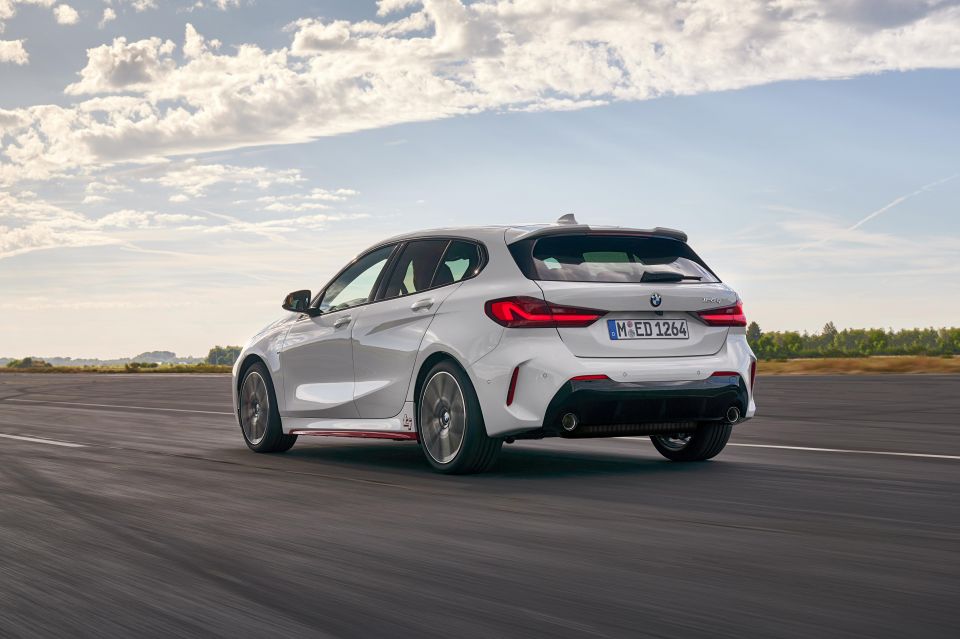
However, unlike the M135i, which sounds all too fake, there’s a great sound from the four-cylinder engine in the 128ti and with the windows down you will hear the occasional pop and crackle from the exhaust. It pulls hard and does so right up to the upper end of the rev range.
When you press on more, the 128ti starts to reveal how nicely its chassis setup is. It runs firmer springs than the M135i xDrive, but also has steering that is a touch less direct and, as you turn into a corner, it all comes together to give the car a more fluid and smooth movement, and it rotates beautifully around apexes.
Steering has long been a strongpoint of BMWs and this remains true in the 128ti. Even though it has electrical assistance it maintains a natural feel to it. The sports steering wheel is a little on the chunky side, but there’s a good amount of weighting to it and the front axle does an excellent job of telegraphing what it’s doing.
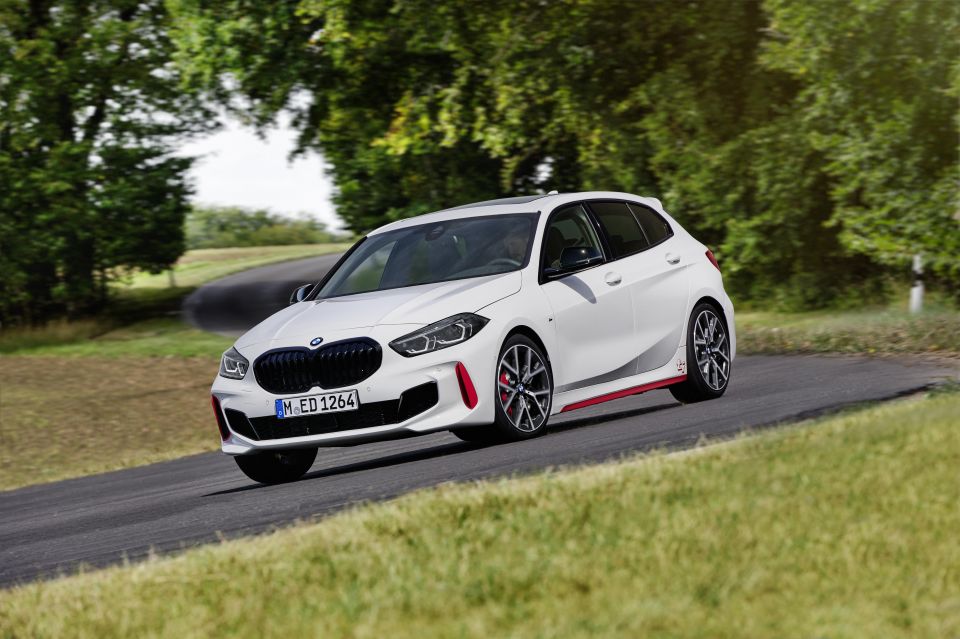
Getting the 128ti onto a track, as we did, allows you to fully exploit the car’s performance potential.
Enhancements to the electronics and the utilisation of the Torsen differential result in high levels of traction when powering out of slower corners, while there is next to no discernible negative influence on the steering. It rides kerbs well and remains very composed and settled at higher speeds.
Gear changes come quickly enough and as you might expect, while using the paddle shifters gives you more control over proceedings.
The use of four-piston aluminium monobloc brake calipers on the front help to provide great stopping power while the pedal feel and modulation are as good as more focused cars like the Golf GTI TCR and Honda Civic Type R. This is a car that rewards you the more you work it.
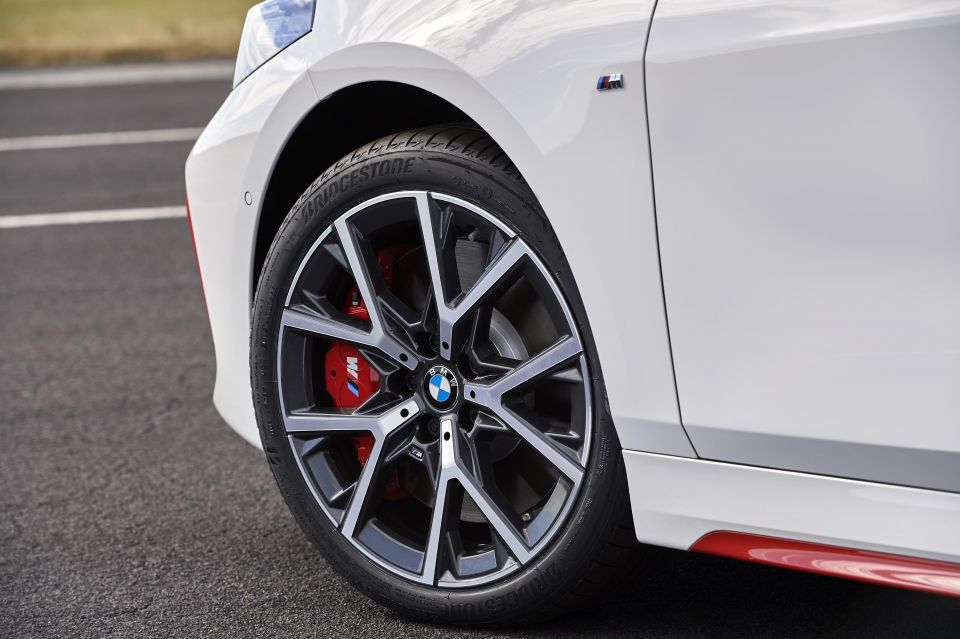
The BMW 128ti comes with a standard three-year, unlimited-kilometre warranty that includes roadside assistance for the duration.
Buyers can opt to extend this and avail of service inclusive plans that can help to spread out the cost of maintaining the car. In Australia, the 1 Series can be had with BMW’s Service Inclusive Basic plan for $1650, covering five years/80,000km of scheduled maintenance.
According to BMW, the 128ti has a combined fuel consumption of 6.1-6.4L/100km, as per its European specification.

The arrival of the BMW 128ti adds a fresh choice to the hot hatch segment and after spending time behind the wheel it’s clear that BMW has taken this car very seriously.
Unlike the M135i xDrive, which can seem a bit contrived, the 128ti behaves and performs much more like a proper hot hatch.
Not only does it easily dispatch the day-to-day commute, but it can still deliver plenty of smiles on the twisty stuff and has enough poke and handling to hold its own on the track.
BMW’s use of the ti badge for this car feels very apt indeed, and even leaving aside price, it is much more of a driver’s car than the range-topping M135i xDrive.
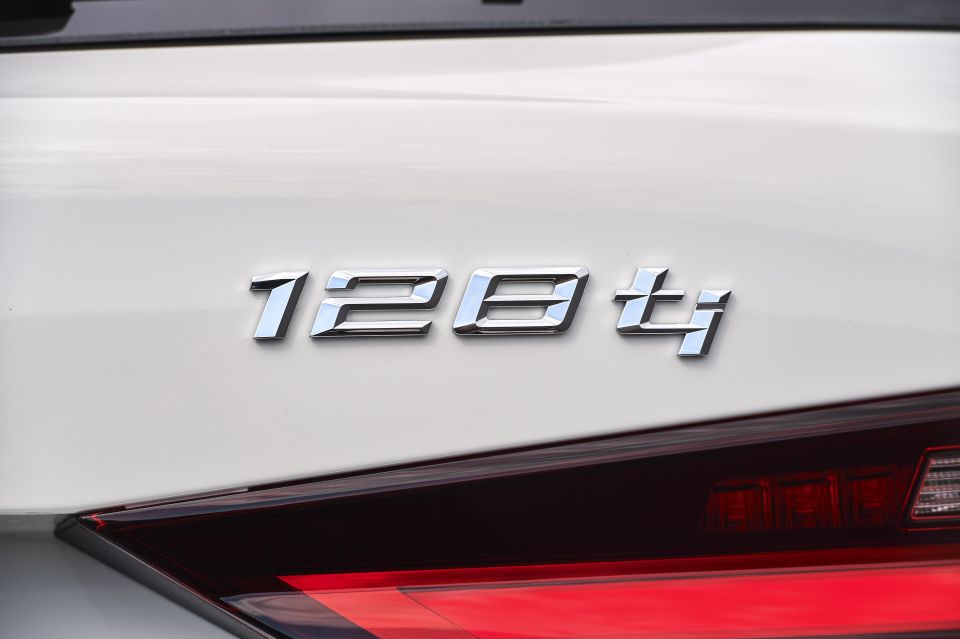
Where expert car reviews meet expert car buying – CarExpert gives you trusted advice, personalised service and real savings on your next new car.
Click on the images for the full gallery
Where expert car reviews meet expert car buying – CarExpert gives you trusted advice, personalised service and real savings on your next new car.


William Stopford
2 Days Ago
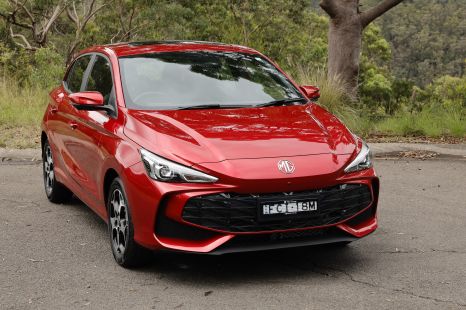

William Stopford
4 Days Ago


Ben Zachariah
8 Days Ago
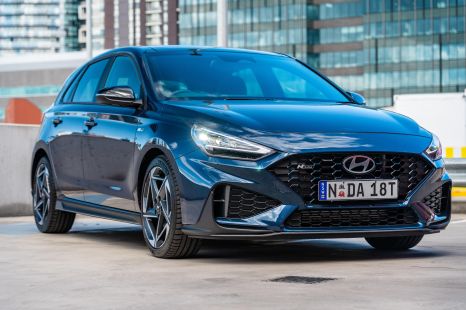

William Stopford
8 Days Ago


Damion Smy
15 Days Ago
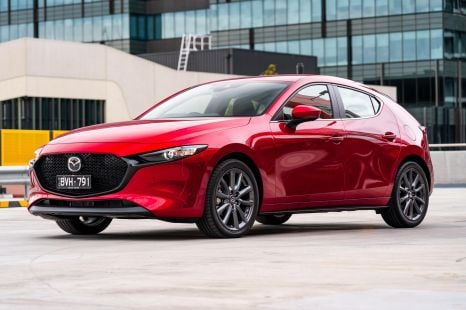

James Wong
16 Days Ago